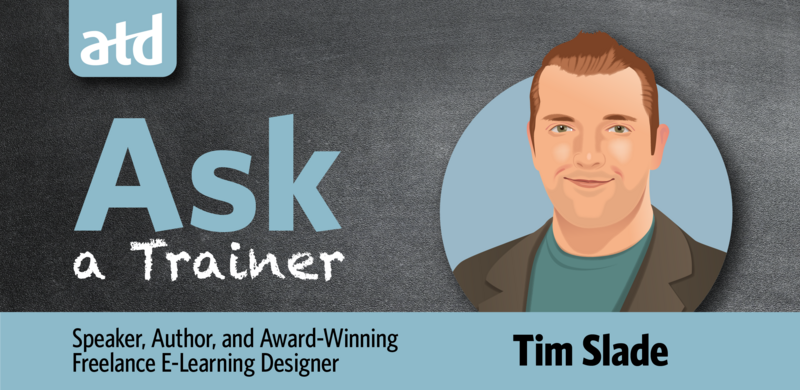ATD Blog
Ask a Trainer: Using SMEs in the Classroom
Tue May 26 2020

Hello, Tim!
I’m a classroom and virtual facilitator working for a technology company in the Seattle area. During the last few months, we’ve experimented with inviting some of our subject matter experts (SMEs) to join our classes and share their knowledge. The intent was to enhance the learning experience by exposing our learners to real experts. At the time, we thought it was a good idea, but things haven’t gone as planned. Many of our SMEs are going into too much detail and spend too much time on the smallest details. This has resulted in us having to rush through other content to make up for the time our SMEs monopolize—not to mention our learners becoming overwhelmed with the amount of information that was thrown at them.
What tips can you share for how we can better use our SMEs in the classroom?
I love this question, as I think most of us have witnessed this type of behavior from our SMEs in some form or another. Inviting our SMEs into the classroom can be a double-edged sword—they love to share what they know, but they don’t know how to effectively share it. This is especially true when they’re asked to share their knowledge with folks who are on the opposite side of the learning curve.
So, does this mean you can’t or shouldn’t use SMEs in the classroom? Not at all. I think SMEs have a lot to offer our learners. The challenge is helping to facilitate the experience.
Here’s what you can do before, during, and after you invite your SMEs into the classroom to help make it a success.
Before the Session
Before you invite your SMEs into the classroom, it’s important to meet with them first. You never want to walk into a situation (or a classroom) and assume your SMEs know what you need to get from them. They don’t!
During this meeting, explain why you’re asking them to participate in the class and give them context to how their knowledge and expertise will help your learners. This is also a good opportunity to set expectations regarding how much time they’ll have to speak and any topics you’d like them to avoid. More often than not, your SMEs will be flattered by the invitation and more willing to respect your requests.
During the Session
Your job isn’t done just because you’ve set expectations with your SMEs beforehand. During the session, it’s still your job to keep your SMEs on track and guide the interaction. Remember, your SMEs and your learners are on opposite sides of a learning curve. Once your SMEs start talking, they’ll keep going, and going, and going. You don’t want that.
If you sense they’re going off-topic or into too much detail, don’t be afraid to interject and ask questions that bring them back to the main learning point. Your learners will appreciate it and it’ll keep things moving in the right direction.
After the Session
Once the session is over, don’t forget to circle back with your SMEs and thank them. Talk about how it went and don’t hesitate to give them constructive feedback. It may be awkward at first, but if you make it a regular part of your process, it’ll get easier in time. It also helps if you ask them to give you some feedback too.
I hope these tips help. I know it’s extra work, but it’ll save you some headaches in the long run.
Best of luck!
Tim
What other tips do you have about using SMEs in the classroom? Share them by commenting below.
Do you have a learning question you’d like me to tackle? You can email them to [email protected]. Also, visit the Ask a Trainer hub to check out all of your questions and my answers.
-
We welcome your comments and engagement on these posts. All posts are reviewed to ensure appropriateness based on ATD’s requirements for postings in our online communities.
Please note: Content shared in this column is provided by the author and may not reflect the perspectives of ATD.
You've Reached ATD Member-only Content
Become an ATD member to continue
Already a member?Sign In

